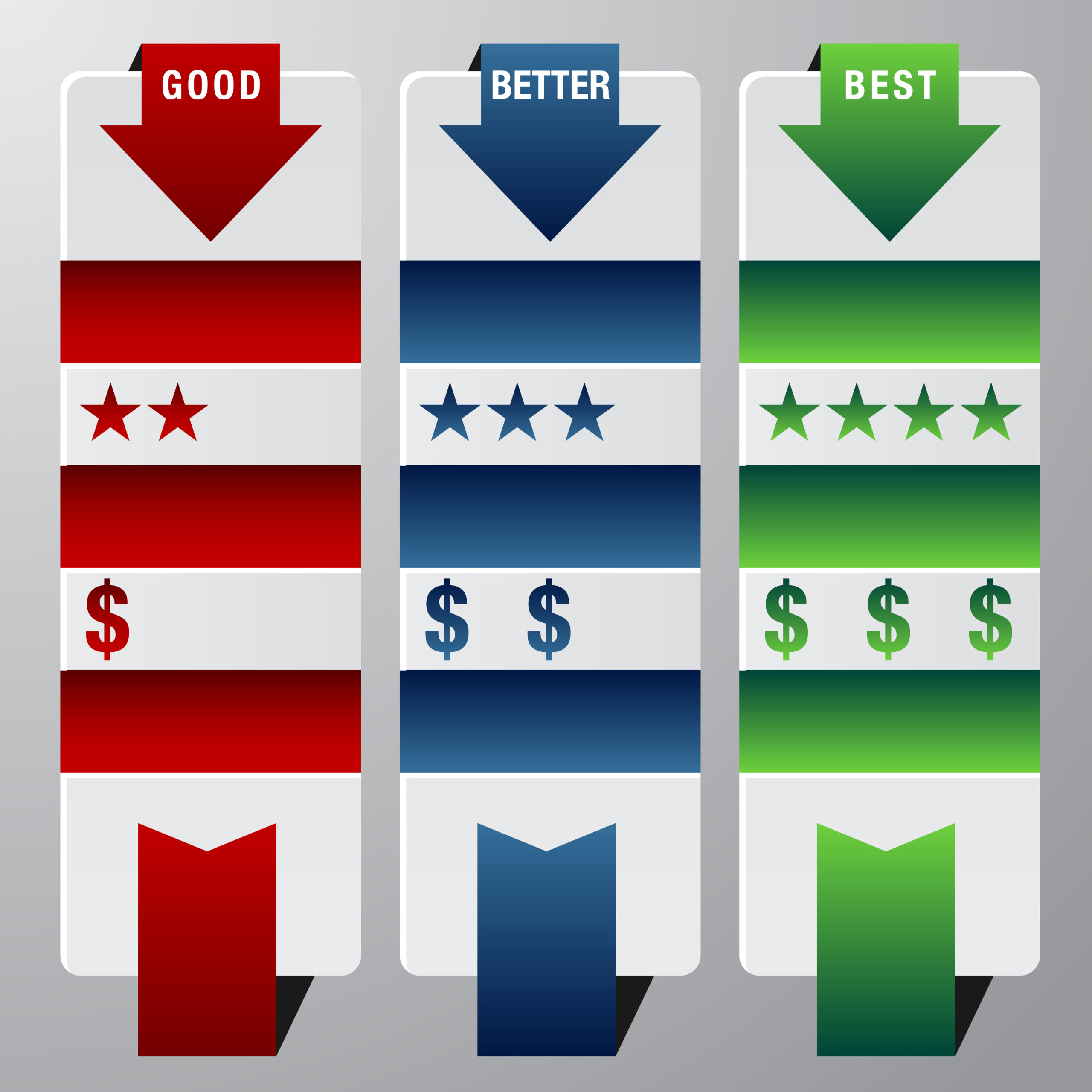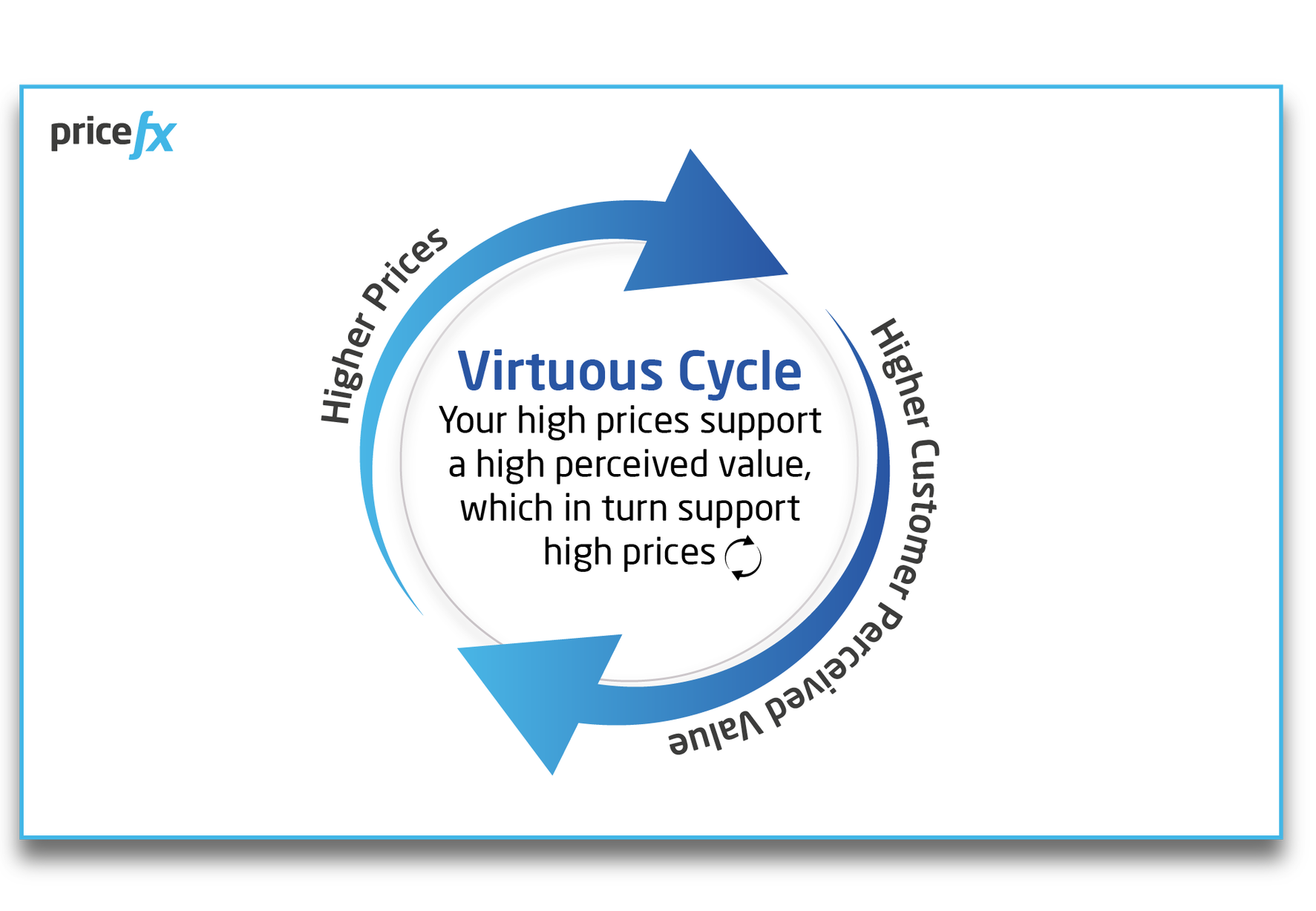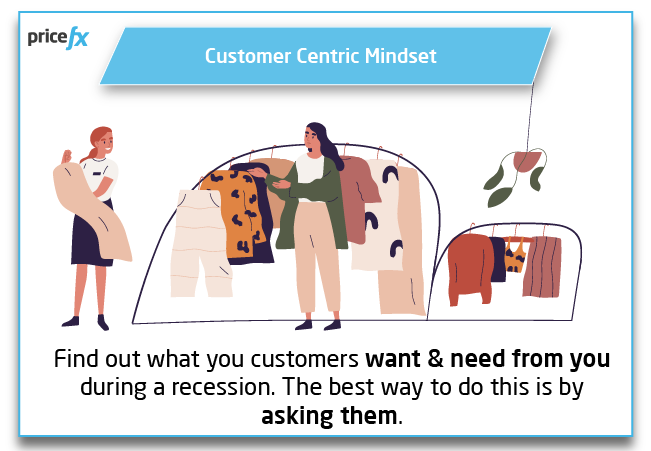How Pricing Software Can be Used to Navigate a Recession
February 20th, 2023 (Updated 03/09/2023) | 12 min. read
We’ve all seen the apocalyptic headlines. Record inflation and fuel prices, an energy crisis driving your delivery costs through the roof and a looming economic recession hanging over the global business world. Will you need to navigate a recession or are things not quite as dire as what the experts may have you believe?
If we are not careful and continually land our expectations in the negative on the question of ‘will there be a recession or not?,’ we might just talk ourselves into it and create our own self-fulfilling prophecy that we will need to navigate a recession of our own making.
Regardless of whether the economy is growing or shrinking, what matters is your business and customer’s performance. If you’re armed with a quality pricing software solution, you may be more likely to come out the other side unscathed.
At Pricefx, as a provider of modern pricing software, we have spent the last dozen years or so answering all manner of pressure points from our customers including assisting them to manage their pricing solutions through tough times of sudden and extreme change. The more volatile our customer markets are the more they see the value in using Pricefx, being able to respond rapidly to market changes means maintaining your margin and market share while others flounder.
So, let’s dive straight into examining at the top 5 ways how pricing software can be used to navigate a recession, now or in the future.
5 Ways Pricing Software Can Help Your Business Navigate a Recession
One of the most important things to realize is that there will not be a ‘one-size fits all’ approach to navigating through a recession. There are no rights and wrongs and what applies to one type of business may not necessarily apply to another organization.
However, let’s take a step back from the specifics for a moment and consider 5 of the best general ways pricing software can help your business navigate a recession.
1. Critically Auditing Your Rebates, Discounts & Promotions
Recessions call for reining in expenditure and holding money back just in case of an emergency. When a recession occurs, at some point there is bound to be reduced demand for your products, so you will want to find ways to preserve the revenue that you do have.
Re-evaluating or eliminating (in the short-term) on-invoice discounts like promotional, volume, standard, and discretionary discounts, or off-invoice deals like buying group rebates and payment term costs could be a good starting point. While rebates and promotions are meant to drive growth, if there is no growth in the market some will be eliminated automatically, others like flat discounts should be adjusted to reflect those customers’ current performance. Customers that are still performing and growing might deserve additional discounts. Moving more discounts to rebates which are conditional can ensure you only pay for performance rather than paying regardless.
One transformation to use in a recession is to transform discounts into rebate programs based on your customer’s sales performance.
Passing any risk onto customer performance rebate targets instead of placing unwanted pressure on your margins may supply your business with a certain level of recession-proofing.
When the recession passes (they always do), you can potentially look at reintroducing your discount programs as rewards for customers who have remained loyal during the rough times once the potential perils of discounts eating into your margins has dissolved.
Crystal-clear communication is one of the keys to managing and maintaining fruitful customer relationships during a recession, in addition to using a full pricing software solution that includes an automated rebate management system as part of its functionality.
2. Managing Reduced Demand
During a recession, managing reduced demand can be a significant challenge for businesses.
One of the pitfalls that we have seen businesses fall into when economic times get rough is that they try to incentivize demand when there really is no demand existing in the marketplace to incentivize.
Frequently, businesses try to pull in extra sales through decreased pricing actions. Once a company has set a downward price level for their products, an expectation develops that those new prices are what customers are expecting to pay, now AND into the future. When business does eventually bounce back as the recession eases, there is often not room or taste in the marketplace to maneuver prices upwards again. The result could be a long-term margin reduction that lasts much longer than the recession itself.
When the economy returns to a growth environment, customers have been conditioned to pay less during the recession. In that kind of business environment, it can become difficult to pass on price rises to your clients when they become inevitable.
What’s more, the better you can reduce your organization’s reduction in power means you will be better able to capture all the available demand at the recession’s outset. Once a competitor reduces their work force, shutters plants, expires contracts with suppliers it will take them months if not years to get back to the service levels they had before and in the meantime, your organization will be happily ready to step in and support your competitor’s customers.
In recessionary times, using pricing software to identify the different segments of your business where cost changes are felt the most is critical.
For example, if your line of products is difficult to source, is limited in its supply or has few viable alternatives, passing on a cost increase to your customers in order protect your profit margin can be easier to manage for this segment.
Even small price increase increments can make an enormous difference to your organization’s profitability. Learn more in the video below about how only a 1% price increase can add a significant increase to your company’s bottom line:
However, some level of cost-cutting may be required but use your data and your pricing software to make smart decisions.
Pricing software can help businesses to analyze data on consumer behavior and market trends, which can provide valuable insights into how to optimize prices (which prices to cut, which prices to increase or decrease and which prices should remain neutral) to stabilize or even increase sales.
For example, businesses can use the software to identify which products are most affected (and least affected) by the recession and adjust prices accordingly and easily implement these price reductions (or price rises if you are looking to leverage into a value-based pricing strategy), across all your channels.
3. Maximize Your Products’ Value
Even if the worst happens and the world’s economy does dip into recession, in most cases, your customers will still have a spending budget, whether it’s been cut or not.
Your customers may be spending less, but they may have more of an eye on the importance of product quality. With smaller buckets of money to spend, your clients will want to ensure that they are receiving value for money, but they are getting a better product that is going to put them in a better position in terms of value perception once the recession ends.
No company wants to spend their tighter recession-era budget on an inferior product that is going to break in 5 minutes.
What’s more, emphasizing your product’s value in a recession (remember, pricing is based on the perceived value) to your customers, not raw material, and fuel costs alone.
For example, if the express delivery service you offer provides value to your B2B customers in maintaining good business relationships with their own clients, communicate to them that it is because of increasing fuel costs and driver shortages that you be required to increase your prices.
Most companies understand price increases when they are openly and transparently communicated, particularly when the products add value to their business, and in turn provide a value proposition to share with their clients.
Value-based pricing is resource-intensive, and it requires dedicated gathering and analysis of customer data. Pricing software takes the collected data and determines your customers’ willingness to pay by segment and persona. You will learn more about your target customers (and your products) than you ever have before.
4. Diversify Your Product Mix

When a recession hits, companies that diversify their product mix give themselves more avenues of revenue-raising and maintaining profitability.
If it suits your company’s business model, consider the following mix of products in your organization’s offering;
- Critically evaluate your product offerings – Internally you have a chance to eliminate products which are costly to produce or procure and muddy your portfolio, you can hide it in the guise of streamlining your production with a smaller workforce. This can also give customers fewer options which will hopefully push them away from a bare-bones offering to the next mix level up, driving more margin.
- Have a bare-bones offering regardless – The idea is to attract more price-sensitive consumers with a ‘lead-in’ product. Companies that are on the lookout for bargain products are still worth your while because you can squeeze out a small profit and build trust for future value-based sales when things improve. It also enables you to keep your production open and you retain a well-trained workforce.
- Good, better, best – Capture the bargain-hunters with a low-end product, and then have a much larger price margin on your premium products. Not everyone will be looking to buy your bargain products and when price matters little, most will usually opt for better-priced products.
- Consider developing a ‘loss-leading’ product – For those in jurisdictions where the practice of using a below-cost item to get customers through the door is legal, those companies can sell them more profitable items once their interest has been aroused. For example, fast food franchises often offer customers a $1 meal to entice them in-store in the hope they will purchase another food item at a greater margin.
- Add accessories – Charge higher margins for accessories that go along with a particular product. Anyone who has ever purchased an almost free razor, only to be charged $25 for 5 blades has intimate first-hand knowledge of this product mix technique.
- Bundling products – Rather than complementary pricing that relies on creating an array of higher-margin products around the decision item, the aim with product bundling is to boost sales volume by bundling things together to get people to buy more. These bundles have a greater perceived value to customers and bring many benefits to the company such as increased average transaction value. “Do you want to upgrade to the value meal with fries and a Coke?’ is a classic bundle!
Pricing software can help businesses optimize their product mix by providing data and insights on product performance, enabling informed decisions, setting competitive prices, and maximizing profitability, and identifying cross-selling and upselling opportunities. It assists in identifying which products are selling well and which are not, and as such, helps set your best prices for various products in the mix.
5. Innovate to Make the Most of Limited Opportunities
Diversify With an Eye to Innovation & Flexibility
Competition can be fierce during a recession as every business wants to win their share of shrinking spending. Price wars benefit no-one and can lead to extended periods of margin stagnation or loss. Study what your competitors are doing but be ready to pivot in your own unique direction. If one of your competitors is taking a particular approach, that doesn’t necessarily mean it is the right one for your business. Research before jumping into any new pricing strategies, look for unique points of difference and remember, innovation is not only related to technology. Using pricing software can allow for quicker and more accurate scenario planning, ensuring that whatever you choose to do, it is backed by solid data and analytics.
Discover what your customers need from you during a recession by being direct and asking them.
It may surprise you how much your customers will pay for a product or service that can help them survive during a severe economic slowdown.
Innovation can also take the form of getting creative in your product portfolio.
Imagine you run a clothing company and you are looking to increase your customer’s willingness to pay. Consider adding a cheaper version of your high-end products to attract customers for those on tighter budgets. For example, offer a lower-priced line of synthetic sweaters with the same stylish and much-loved design to complement your high-end Merino or alpaca wool sweater lines. At the other end of the scale, offer a line of faux leather jackets as an alternative to your chic leather jackets, which may attract vegan shoppers while having a greater margin.
During a recession, be open to adapting to a changing market and technological progress. Be focused, flexible and financially aware. If you take the recession as an opportunity to get to know your company, products, and customers better, the chances are that your organization will be one of the businesses that comes out on the other side in good shape.
As part of the innovation process, pricing software can also be integrated with inventory management systems, which can help businesses to optimize inventory levels and reduce waste during a recession. By monitoring sales data, businesses can adjust their inventory levels in real-time and ensure that they have the right amount of stock on hand to meet demand.
The Recession May Not be Coming – But if it is – You’re Ready!
One of the best ways to avoid a recession is not to allow yourselves to be talked into the ’doom and gloom’ hype that is inevitable. If history is any indication – recessions are not universal, they impact each industry differently – so act accordingly. However, if a recession does eventually arrive, you’re now armed with 5 of the tops ways how pricing software can be used to help your business navigate a recession.
If you are looking to prosper during a recession and not simply ride out the storm, then you will want to consider an award-winning pricing software solution like Pricefx or similar.If your company is not ready to consider throwing money away in recessionary times, then it sounds like time for your business to start exploring pricing software options:
However, if you have already narrowed your pricing software search down to Pricefx, talk to one of our pricing experts today to get you on your way:




